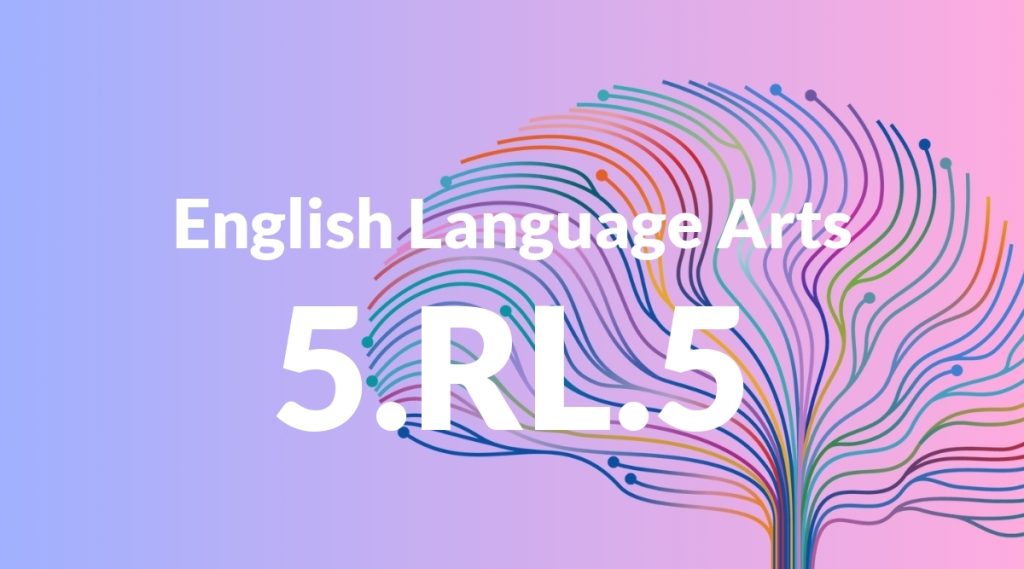Standard: 5.RL.5 – Explain how a series of chapters, scenes, or stanzas fits together to provide the overall structure of a particular story, drama, or poem.
Grade level: Grade 5
Subject: English Language Arts
Domain: Reading: Literature
Teacher Overview
This standard focuses on helping students understand how the structure of a text contributes to its meaning. By analyzing how chapters, scenes, or stanzas fit together, students gain a deeper understanding of the author’s craft and the story’s development. This skill is crucial for comprehending complex texts and is foundational for more advanced literary analysis. Students should be comfortable with identifying basic elements of a story, such as characters, setting, and plot. They should also have experience summarizing texts and identifying main ideas and supporting details.
Mastering this standard prepares students for more advanced literary analysis. They will be able to dissect complex texts, understanding how structural elements contribute to themes and character development, and will be better equipped to write their own structured narratives.
Common Misconception 1
One common misconception is that each part of a text, like a chapter or scene, is independent and does not contribute to the overall story. This is incorrect because each segment is designed to build upon the previous ones, adding depth and complexity to the narrative.
Intervention 1
To address this misconception, have students create visual aids like storyboards or flowcharts that link each chapter, scene, or stanza to the overall plot. This helps them see the interconnectedness of the text’s structure.
Common Misconception 2
Another misconception is that the structure of a text is irrelevant to understanding the story. This is incorrect because the structure is a deliberate choice by the author to enhance the reader’s comprehension and engagement.
Intervention 2
Use graphic organizers to map out the text’s structure. This visual representation can help students see how the organization of the text contributes to their understanding of the story.
Prerequisite Knowledge
Students should have a basic understanding of the elements of a story, such as characters, setting, and plot. They should also be familiar with identifying the main idea and supporting details in a text.
Subsequent Knowledge
After mastering this standard, students will be able to analyze more complex texts, understanding how different structural elements contribute to themes and character development. They will also be prepared to write their own structured narratives.
Instructional Activities
- Create a storyboard for a book the class is reading, showing how each chapter contributes to the overall plot.
- Have students write a summary of a play, breaking it down by scenes to show how each scene builds the drama.
- Analyze a poem by breaking it down into stanzas and discussing how each stanza contributes to the poem’s theme.




